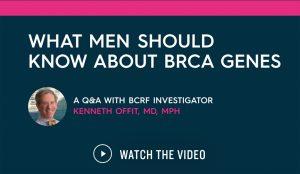Triple-Negative Breast Cancer: Symptoms, Treatment, Research

All about this aggressive breast cancer subtype: what it is, how it’s treated, and how research is improving outcomes
To talk about triple-negative breast cancer (often shortened to TNBC), we must first understand how experts classify breast cancer. The most basic classification of breast cancer is based on the presence of three common markers: estrogen receptor (called ER-positive), progesterone receptor (PR-positive), and human epidermal growth factor receptor 2 (HER2-positive).
More than 70 percent of breast cancers are ER-positive and/or PR-positive (grouped together as hormone-receptor positive, or HR-positive) and rely on estrogen to grow. About 20–25 percent of breast cancers are HER2-positive and depend on growth pathways regulated by that protein. These markers not only determine the tumor’s biology but also a person’s treatment plan, as there are targeted therapies for these subtypes.
Triple-negative breast cancer is so-named for the simple reason that its tumor cells do not express any of these three receptors. TNBC accounts for approximately 15 percent of invasive breast cancers.
Triple-negative breast cancers: tend to be more advanced when diagnosed and more aggressive than ER-/PR-positive cancers; disproportionately affect Black and Hispanic women as well as younger women; and are the most commonly diagnosed breast cancer in women with inherited mutations in the BRCA1 gene.
Read on to learn about triple-negative breast cancer symptoms, treatments, and how BCRF-supported researchers are working to understand and better treat this subtype.
Triple-negative breast cancer symptoms
Most breast cancers are detected before a woman shows any symptoms through regular breast cancer screening such as mammography. Triple-negative breast cancer, however, is more likely to occur in younger women (less than 40 years old) before they reach screening age. That’s why it’s important for women of any age to be familiar with their breasts so they can spot any changes, such as a hard lump.
Other less common symptoms of triple-negative breast cancer include swelling, skin dimpling, pain, nipple retraction, discharge, redness, or swollen lymph nodes under the arm. If you experience any of these symptoms and they persist beyond one menstrual cycle, consult your doctor, who may recommend imaging tests or a biopsy.
A triple-negative breast cancer diagnosis is not based on specific symptoms, but on characteristics of cells obtained from a biopsy. These cells are checked for estrogen and progesterone receptors and HER2, with the presence or absence of each used to determine a person’s breast cancer subtype. Cells that lack these three receptors may then be definitively classified as triple-negative breast cancer. Using gene expression profiles, TNBC can be further classified by molecular subtype, as basal-like or as having specific mutations in genetic susceptibility genes such as BRCA1 and BRCA2.
Triple-negative breast cancer survival rate
The aggressive nature of triple-negative breast cancer contributes to the disease’s mortality rate. A 2024 study reported that over the last four decades, there has been a 58 percent reduction in breast cancer mortality due to more effective therapies and screening. While a bigger reduction was expectedly seen in hormone receptor (HR)–positive and HER2-positive breast cancer, promisingly, there was also a decrease in the mortality in patients with TNBC.
Survival rates are estimates based on the outcomes of large numbers of people with a specific cancer—they cannot predict what will happen in every case. A relative survival rate compares women with the same subtype and stage of breast cancer to women in the overall population. Studies have analyzed data to determine the five-year relative survival rate for specific subtypes and stages of breast cancer, including triple-negative breast cancer.
Triple-negative breast cancer prognosis, like prognoses for other types of breast cancer, is influenced by several factors, including the stage at diagnosis and whether the disease has spread to lymph nodes or other locations in the body (triple-negative breast cancer metastasis). Because TNBC tends to be more aggressive and there are fewer targeted treatment options, it often has a worse prognosis than more common types of breast cancer.
According to 2025 SEER (Surveillance, Epidemiology, and End Results) database, the estimated five-year triple-negative breast cancer survival rate is:
- 92.4 percent for those with localized breast cancer (cancer that is only within the breast)
- 67.5 percent for those with regional breast cancer (cancer that has spread to nearby areas such as the lymph nodes)
- 14.9 percent for those with distant/metastatic breast cancer (cancer that has spread to other areas in the body such as the bones, liver, or lungs)
It is important to keep in mind that these are estimates and do not indicate any given individual’s survival rate. While these data points give us a better understanding of the likelihood that will be successful, our understanding of TNBC is evolving. Researchers are working to personalize risk prediction and prognosis to ensure patients receive the most appropriate treatment for their cancer and to reduce the risk of triple-negative breast cancer recurrence.
Triple-negative breast cancer treatment
In contrast to HR-positive and HER2-positive breast cancers, there are few FDA-approved targeted therapies for triple-negative breast cancer—making this an urgent priority. Triple-negative breast cancer treatment is particularly complicated because there is no obvious drug target like there is for HR-positive or HER2-positive breast cancer. Until recently, surgery, chemotherapy, and radiation were the standard treatments for TNBC.
But this is changing as we learn more about the biology of this particularly complex form of breast cancer. Research shows that TNBC is not a single disease but a group of breast cancers with distinct molecular and clinicopathological characteristics. In fact, experts can now classify TNBC into several distinct molecular subsets based on gene expression profiles.
Identifying specific drivers opens the door to developing novel therapies, including immunotherapy, targeted drugs called PARP inhibitors, and a newer class of drugs called antibody drug-conjugates (ADCs). In 2021, the FDA approved Trodlevy® (sacituzumab govetican), the first ADC for treating metastatic TNBC. Researchers will continue to build on these findings that have important implications for the disease’s prognosis and for future triple-negative breast cancer treatments.
The stage at which a triple-negative breast cancer is diagnosed can dictate the treatment plan patients and their doctors choose.
Stages 1-3 triple-negative breast cancer:
- If the tumor is small, doctors may recommend breast-conserving surgery (lumpectomy).
- If there is lymph node involvement, doctors may perform a mastectomy and lymph node removal.
- If the tumor is large or if the cancer has spread to the lymph nodes, radiation may follow surgery.
- In early-stage disease, chemotherapy may be given before surgery (neoadjuvant chemotherapy) to shrink a large tumor or after surgery (adjuvant chemotherapy) to reduce the chances of triple-negative breast cancer recurrence.
Stage 4 triple-negative breast cancer/triple-negative breast cancer metastasis:
- Chemotherapy may be the initial treatment when the disease has spread to other parts of the body.
- For patients with triple-negative breast cancer and a BRCA mutation who are no longer responding to common chemotherapy agents, other platinum-based chemotherapy drugs (cisplatin or carboplatin) may be used.
- For patients with triple-negative breast cancer and a BRCA mutation, targeted drugs called PARP inhibitors — such as Lynparza® (olaparib) or Talzenna® (talazoparib)— may be used to target an important enzyme in DNA repair.
- The immunotherapy drug Keytruda® (pembrolizumab) in combination with chemotherapy is approved as a first-line treatment for patients whose advanced triple-negative breast cancer cells have the PD-L1 protein. One out of five triple-negative breast cancers express this protein. Other anti-PD1 antibodies in combination with chemotherapy are currently being tested in clinical trials.
- For patients who have already undergone two other drug treatments, the ADC Trodlevy® (sacituzumab govitecan-hziy) might be an option.
BCRF’s investment in triple-negative breast cancer research
BCRF is the largest private funder of breast cancer research in the world and currently dedicates about 25 percent of its total investment to triple-negative breast cancer. BCRF investigators have been involved in every major advancement in our understanding of this disease: determining its molecular and clinicopathological characteristics; discovering its association with BRCA mutations and how PARP inhibitors can treat these patients; and developing and testing drugs that are currently FDA-approved for triple-negative breast cancer treatment.
BCRF continues to fund research into all aspects of triple-negative breast cancer including:
- probing the basic biology of the disease
- improving the efficacy of current treatments
- determining ways to overcome resistance to treatments
- developing new treatments
- investigating the disparate impact of this subtype in Black and Hispanic women
Through these investigations, BCRF researchers are looking for potential targets for triple-negative breast cancer treatments and are providing new insights into the molecular complexity of the disease. Lack of precision therapies have led to worse prognoses for patients with triple-negative breast cancer. But, thanks to research, this landscape is changing and BCRF is deeply committed to propelling progress against this disease. Only through continued investment in research will we advance our understanding of triple-negative breast cancer to ultimately improve outcomes and save lives.










